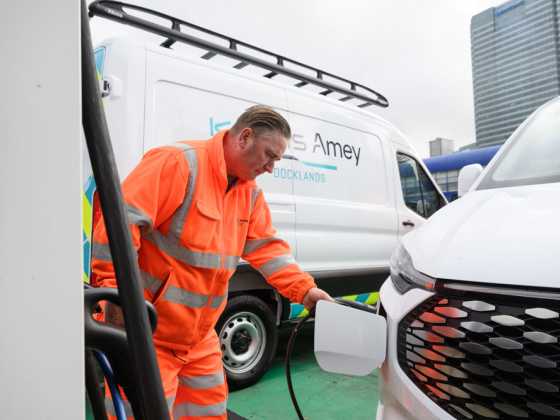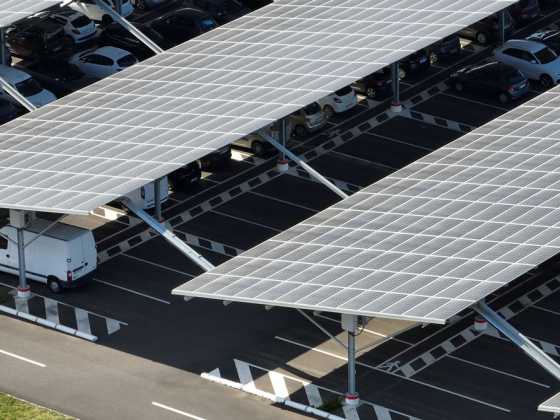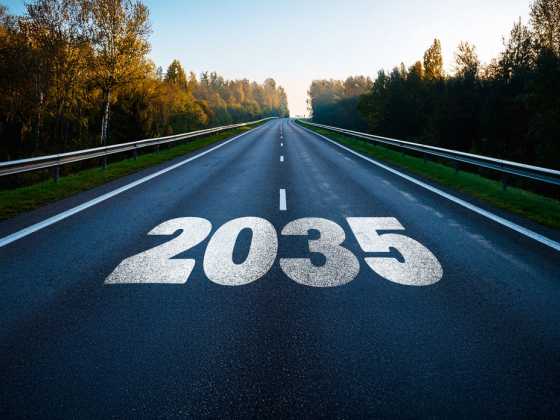How the drone industry can decarbonise key sectors

Drones can help decarbonise high-emitting industries, such as transport, construction, agriculture and energy, supporting global efforts to achieve net zero targets. Victor Basta, CEO of DAI Magister, explains further
The global drone market is experiencing explosive growth driven by technological advances and rising commercial demand. It’s projected that by 2030, the worldwide shipments of commercial drones will reach 9.6 million, with the United Kingdom alone expected to deploy as many as 900,000 drones.
Commercial applications now represent the fastest-growing opportunity within the drone industry, offering a large total addressable market estimated at $127bn. Among the sectors that stand to benefit the most are construction, agriculture, and energy, where the total addressable value of drone solutions is $45bn, $32bn, and $6bn, respectively.
Drones provide extensive applications across these sectors that impart substantial economic advantages. They can also help decarbonise these high-emitting industries, supporting global efforts to achieve net zero targets. Apart from this, the emergence of new use cases can unlock valuable new market opportunities and revenue streams.
Energy
With their exceptional manoeuvrability, remote data gathering capabilities, and ability to autonomously execute tasks, drones are a powerful tool for improving operations and enhancing the efficiency of energy grids. Drone inspections of power lines cut inspection costs by anywhere from 28-55 per cent compared to helicopters, while solar farm and wind turbine inspection costs can be lowered by 50 per cent and 70 per cent, respectively. Analysing the data collected from these sorties can detect early signs of faults or damages (e.g., broken wires, corrosion, loose connections, and overgrown vegetation) that lead to energy loss, allowing timely action to prevent more costly future repairs, power outages, and energy loss.
At renewable energy infrastructure sites, routine drone inspections of wind turbines can identify defects or problems like corrosion or structural damage that would shorten a turbine’s service life. Rapid identification and early repairs prevent energy losses and reduce capital expenditure on replacement turbines, improving the financial viability of wind energy projects and making them more attractive to investors.
Drones also have the capability to maximise renewable power generation from wind turbines and solar panels. Combining real-time data from monitoring and inspections with LiDAR technology enables the creation of detailed 3D models of these assets, which allows for comprehensive performance assessments and the optimisation of power generation.
From an environmental standpoint, drones significantly contribute to reducing carbon emissions. Collecting real time data on energy production, distribution networks, and consumption patterns provides critical insights into resource usage and helps identify inefficiencies, optimising resource management.
Drones equipped with thermal cameras and other advanced sensors can also conduct pipeline inspections and identify heat loss, serving as an early indication of potential leaks. They can meticulously survey oil and gas wells, searching for signs of leaks such as oil sheens on the ground or in water.
Agriculture & reforestation
Although drones have yet to be extensively utilised in the agricultural sector, they hold immense potential as a crucial facilitator of sustainable farming and precision agriculture practices. These practices have the capacity to make a substantial impact by reducing CO2 emissions and empowering farmers to achieve higher yields while minimising resource consumption.
Conventional soil and field analysis and planting methods present significant obstacles rooted in manual labour, inefficiency, trial and error, and a lack of real-time information. Traditionally, farmers have had to manually collect soil samples and inspect fields, which consumes significant time, incurs high costs, and is susceptible to human error. This leads to suboptimal planting decisions and inefficient resource allocation, resulting in diminished crop yields and financial losses. Drones can revolutionise this practice by performing rapid and accurate soil and field analysis that reduces planting costs by 85 per cent and increases uptake rate by 75 per cent.
After planting, drones can collect data on general crop health, measuring crop growth, moisture levels, water stress, and nutrient levels. The gathered data, combined with high-resolution images, can identify areas of the field that need attention and inform decisions when allocating resources (irrigation, fertilisation, and pesticide application). This data can also enhance pest and disease protection, enabling farmers to identify and deliver more precise treatments before crops experience significant damage.
Above and beyond these economic benefits, drones provide an eco-friendly alternative to traditional farming practices that heavily rely on chemicals and machinery consuming fossil fuels and emitting greenhouse gases. Farming operations can significantly reduce carbon footprint by simply replacing such machinery with drones. Moreover, by accurately identifying areas affected by pests or nutrient deficiencies, drones enable farmers to apply pesticides or fertilisers only where necessary, effectively reducing the use of harmful chemicals.
While these impacts are significant, it’s perhaps in the area of reforestation where the capability of drones really stands out. Unlike the labour-intensive process of manually replanting trees one by one, drones programmed with precise GPS coordinates can swiftly and efficiently cover expansive land areas, planting multiple seeds simultaneously. This automated process is up to 25 times faster than manual methods while reducing costs by up to 80 per cent.
Construction
Integrating drones into day-to-day construction operations can deliver enhanced efficiencies, reduced costs, and improved project outcomes in an industry plagued by inefficiencies and budget and schedule overruns.
Drones with high-resolution cameras and sensors can rapidly capture aerial imagery and data over construction sites to generate accurate 3D models and topographic maps. This eliminates the need for time-consuming and costly manual inspections and traditional surveying. With the ability to gather and share accurate data faster and in real time, construction teams can assess construction progress, identify potential issues, and make informed decisions quicker, leading to shorter project durations and fewer costly delays.
More accurate measurements of terrain, structures, and volumes also reduce the risk of human errors and inconsistencies, leading to better planning, resource allocation, and project outcomes. Moreover, the ability to efficiently survey sites and collect data in real time helps optimise energy and water consumption in construction processes, resulting in more precise resource management and less waste throughout the life of a project. Utilising drones for site inspections and material transportation in place of regular vehicles also enables site operators to lower carbon monoxide, nitrogen oxide, and particulate matter emissions.
Transport & deliveries
The value of drones extends well beyond current applications. Innovative new use cases can unlock new market opportunities and revenue streams. For example, automated drones can reduce transportation and human costs and increase the efficiency of point-to-point delivery.
Automated drones can navigate direct routes, bypassing multiple stops and intermediaries, avoiding traffic congestion and reducing delivery times. This increased efficiency allows for the completion of more deliveries in less time and substantial cost savings associated with transportation, resulting in improved productivity and higher revenue generation.
Replacing or supplementing conventional transportation methods with battery-powered drones will also result in fewer delivery vehicles on the road, especially during peak hours, helping to reduce carbon emissions and air pollution associated with these vehicles and overall traffic congestion.
Commercial drones take flight
While drones have been around for a relatively long time, their transformative potential within the commercial realm is only now being realised. In the United Kingdom alone, the deployment of almost 1 million drones is expected to contribute an estimated £45bn to the economy by 2030, with potential net cost savings estimated at £22bn. This will result in a reduction of 2.4 million tons of carbon emissions.
Looking ahead, as businesses increasingly adopt drones for day-to-day operations and new use cases unlock new market opportunities and revenue streams, the commercial drone industry holds tremendous potential for both businesses and investors.






